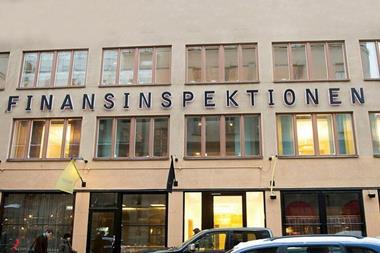Gaining exposure to property can be time-consuming and resource-heavy. It requires the knowledge to ride the property cycles and hands-on asset and portfolio management to maintain and extract the value. However, property’s income-producing and low volatility attributes are making it a popular antidote to growth investments.
The property sector is keen to capitalise on this with the growth of the private funds’ market boosting the indirect investment route. For investors, this usually involves investing in property via private funds, where collective pools of capital are invested in real estate, often with a remit to specialise by sector or location.
Research group OPC estimates that around €320bn of vehicles open to institutions have invested in or are targeting Europe. This tends to cover three different styles of investment. First, opportunity funds, which mainly bring US capital to Europe to seek out venture-capital style investments, traditionally targeting returns of 20% plus, although this is thought to have lowered as market conditions have toughened. At the other end of the scale are funds seeking institutional-style returns of around 8 to10%. In between, and one of the largest growth areas for the fund management sector, is the core-plus or value added range of funds, which add just a few percentage points to institutional returns, seeking returns in the early and mid teens.
Investing via funds brings many advantages: they can gain exposure to sectors or locations, particularly non-domestic, without committing resources and smaller institutions can allocate relatively small amounts of capital and still be active in the sector. Often institutions are gaining the best of specialist management in the field, which is feeding through into performance. The flipside is that the property industry is still grappling with the indirect route. There is a large demand for core and core plus vehicles but the sector is lagging the institutional appetite. The industry is also debating routes towards better transparency, benchmarking as well as attempting to increase liquidity in the sector.
Performance has to be one of the main selling points for institutions looking to the private funds’ sector. Benchmarking in the sector is in its infancy but work by Investment Property Databank, the performance measurement specialist, and ABN Amro Bank on UK limited partnerships - the most established vehicle - is beginning to highlight the advantages of indirect vehicles. In 2002, private property funds outperformed direct property. Direct property returned 9.6% while underlying assets in a fund returned on average 10%. This figure rose to 10.4% when taking into account portfolio management. On top of this, gearing added 2.7% which, minus fees, accounted for a total return for the sector of 12.6%. “Specialist management is really adding something,” explains Phillip Rose, head of European real estate at ABN Amro. “They should not be shy about telling market how well they are doing.”
And for institutions, there has not been a better time to tap the best of this specialist management. The trend for quoted property companies to transform into fund managers has gained momentum, giving investors access to expert management (and hopefully out performance) in niche parts of the market.
It is what Tony Edgley, chairman of corporate finance at Jones Lang LaSalle, calls a happy collision of “private equity money looking for skills that are mainly found in public property markets”. The quoted property sector's discounts to net asset value have restricted the companies' ability to raise money in the capital markets. Instead, they have spun off stabilised property assets into funds, which have attracted institutional capital. UK companies such as Capital & Regional, Ashtenne and Pillar Property retain a stake in the funds but also take management fees from investors. In Portugal, specialist shopping centre developer and operator Sonae Inmobiliária is looking to transfer some of its high-quality shopping centres to a fund and Pillar Property will capitalise on its specialist retail knowledge to raise a continental European retail fund.
Indirect funds can also give institutions the confidence to diversify outside their domestic countries, with fund managers handling the origination of deals and the management. Being led outside home markets by a known specialist management can provide a comfort factor with Pillar’s move into continental Europe, for example, expected to encourage UK capital to follow.
The growth in private funds will eventually allow institutions to make strategic allocation decisions over their exposure and then use a “multi-manager” approach to pick funds to gain exposure by return profile, location or sector. However, there is a sense that the industry is still playing catch up to institutions' appetite. “There is a creator and manager lag between what is happening in the property cycle, and the availability of product. These often take two years to create,” says Chris Taylor, fund management director at Prudential Property Investment Managers (PruPim).
European investors are less likely to be active in any future opportunity funds although Danish institution ATP has invested in the Apollo Real Estate Advisors’ international fund, and Christophe de Taurines, managing director of The Capital & Marketing Group, sees more interest from Europe. “The capital we are targeting is changing. We’re focused on European and Middle Eastern capital.”
For the majority of institutions, indirect investment can be about trying out new sectors or new countries for the first time and the risk has to be contained with core and core plus predicted to be the favoured options. PruPim is playing to this with its €1bn core fund with Morgan Stanley, which will target office properties in the Euro-zone, which Taylor says is about “decent income, relative security and avoiding development”.
Others in the pipeline will offer institutions exposure to specialist sectors but with a core or core plus return profile. ING Real Estate is launching a core €1bn French and Belgium shopping centre fund, which also enables smaller investors to gain exposure in a sector where lot sizes for assets are out of their league for direct acquisition. Next year it will also raise a central European fund with assets which are core but the nature of the location propels the fund into the core plus league.
Investors themselves are having lots of influence of how these core and core plus funds develop. This has been reflected with the move away from blind pool funds, whereby money is allocated to a fund by investors before assets are purchased. “If they don’t have assets, they have to feel more certain about the where the fund is focusing,” says Malcolm Naish, director at Fountain Capital Partners. “Two years ago, investors felt it was easier to take a view on markets.”
One major drawback of the fund market has been its liquidity. Institutions have their capital tied up for the lifetime of the fund and there has been limited secondary trading. This has been restricted due to worries over valuing assets in live funds and the legacy that sales in units have mainly undertaken by distressed sellers.
InRev, the association for Investors in Non-listed Real Estate Vehicles, has been set up to represent the investors in private funds, and is aiming to push transparency, benchmarking and to encourage a secondary trading market to give investors liquidity, a factor that the real estate sector lacks both directly and indirectly. But the industry is sceptical that this is what institutions want and also whether it can be achieved. “Investors will have to accept another level of pricing volatility for greater liquidity,” says Rose, adding that institutions know what they are signing up to. “Most investors are making long-term portfolio investments in the same way as they do for their core portfolio. Investors buy core assets to hold with a five or 10-year view. Where is trading going to come from if investors are not buying units with trading in mind?”
It is acknowledged, though, that the routes to secondary trading such as transparency, accessibility and standards of best practice, will benefit both the fund manager and investor as the sector to grows.
Andrea Carpenter is editor of Euro Property, published in London












No comments yet